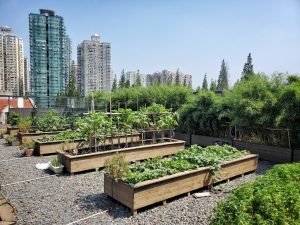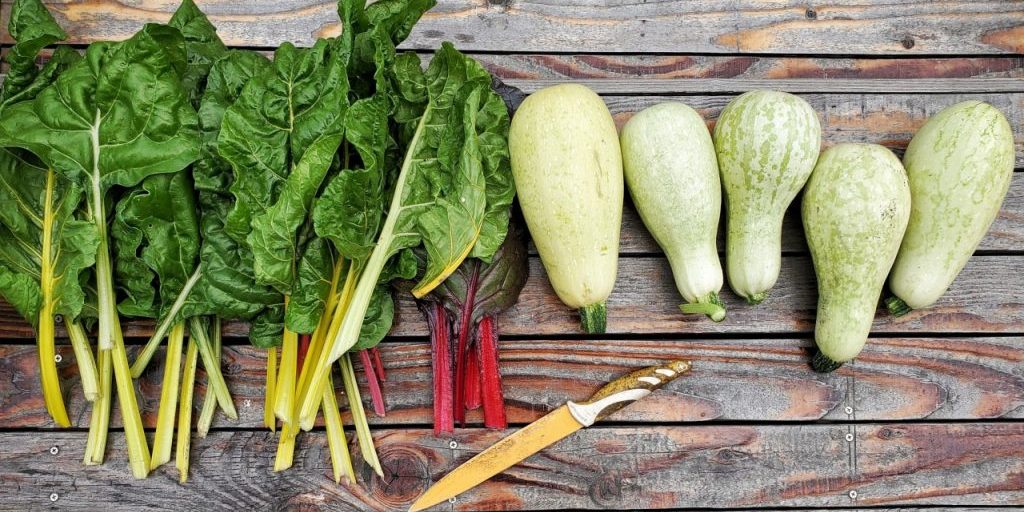Plants
Aubergine (See Eggplant)
Arugula (See Rocket)
Beans
Sow all bean seeds where they are to be grown, rather than transplant.
Dwarf Bean, Climbing Bean, Runner Bean
Plant in late March/ early April for harvest in June, or in late August for harvest in October
Broad Beans (Fava Beans, 蚕豆, Cándòu)
Plant broad beans in October so that have some growth before the end of the year and will survive winter better. Broad Beans dont mind the cold, and by planting them in the autumn they will grow better and stronger in the spring, and you will be able to harvest in the pods in April before the weather gets too hot. You can tell they are ready by feeling the size of the beans inside the pods, or even easier just open a few pods every few days until you are satisfied that they are big enough to eat. Aphids love the tips of broad bean plants so after the plants have put out flowers you can pinch off the tips to discourage these pests.
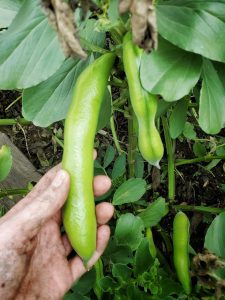
Beets/Beetroot (甜菜, Tiáncài)
Beets are a colorful, cool-season crop and can be planted in early spring, several weeks before the last frost date. They are very easy to grow from seed. Sow in February, March, April and again in September and October in full sun for the best roots. Keep the soil consistently moist during germination. Beets don't like to be too crowded so space the seeds at least 1 inch apart and thin them out as they begin to grow. Beets are relatively disease and pest free and take around 6-8 weeks to be ready for harvest.
Bell Pepper (See Capsicum)
Bok Choy (See Qing Cai)
Capsicums/Bell Peppers (青椒, Qīngjiāo)
Sow outdoors in May or June, for harvests all the way through to the end of September.
Carrots (胡萝卜, Húluóbo)
I've had the best results from planting directly into the soil in either mid to late Feb or very early March, although they can be grown here through winter also by planting in September/October and harvesting in spring. Local varieties can be a bit tasteless, if you can get some from overseas, particularly the small ornamental or heirloom varieties, you will be rewarded with a sweet and delicious harvest.
Carrot seeds take several weeks to germinate. Try to keep the soil moist (but not soaking) while you wait for the sprouts to poke through. I always like to sow more than i need, as I would rather thin them as they grow then have empty spaces where some of the seeds failed. Plus everything you thin is edible, even if it's small, and I'm told carrot tops make a great pesto also, although I've yet to try it.
For carrots sown in Feb/March, harvest is usually in around May/June.
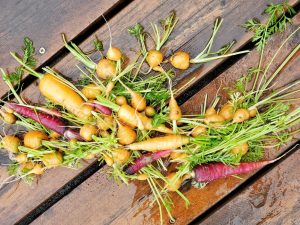
Chillies (辣椒, Làjiāo)
Sow outdoors in May or June, for harvests all the way through to the end of September.
Chives (韭菜, Jiǔcài)
These can be grown closely together in bunches. Planting from seed is possible, but if you are in a hurry you can buy the seedlings very cheaply on Taobao to get a head start.
Corn (玉米, Yùmǐ)
Cucumber (黄瓜, Huángguā)
These are climbing plants so it's best if you can provide a vertical support or structure for the plant to grow up. Start the seeds indoors in April and transplant, or start outdoors in May where they are to grow.
Courgette (See Zucchini)
Daikon (白萝卜, Bái luóbo)
Radishes require full sun to part shade and regular water in order to thrive. Daikon are heat tolerant and can be planted both in the spring and autumn for summer and winter harvests. Those planted in the summer may be hotter and become woodier quicker than those planted in the autumn. The plants take around 50-60 days to mature and will spread their canopy over a wide area. It is therefore a good idea to leave some space between the rows.
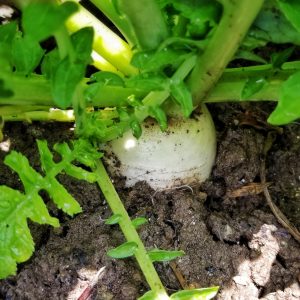
Endive (菊苣, Jújù)
Sow in May or early June, to have leaves throughout autumn. Sowing earlier than this may see the plants go to seed in the summer heat.
Eggplant (茄子, Qiézi)
One of my very favourite plants to grow in Shanghai. Eggplants love the heat and tolerate our summers very well. The flowers are very pretty and if you continue to pick the fruit you will have bountiful harvests for many months.
Start indoors or under cover in April and transplant in May, or plant your seeds directly outside in May. Because they will grow reasonably tall, a support or stake of some kind is necessary to keep the plants upright, especially during typhoon season. The plants give quite good yields for their size and you should be picking fruit from the beginning of July easily through to September.
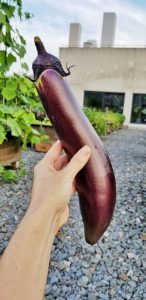
Garlic (大蒜, Dàsuàn)
Another of my absolute favourites to grow in Shanghai, mostly because it is so easy. Pull apart a large bulb of garlic and plant the largest cloves into holes about 2-3 inches deep and about 7 or 8 inches apart (around 20cm). Big cloves will produce big bulbs, and small cloves will produce small bulbs. Plant in October so that there is some good green growth before winter arrives, and the plants go dormant over winter. They will take off again in the spring and bulb up. They are ready to harvest when the bottom few leaves have begun to dry. Usually around the end of April or beginning of May. For best results, hang the garlic somewhere to dry for a week or two after harvest. You can then remove the outer skin to reveal the beautiful clean bulbs underneath and they will store for longer in this condition.
Garlic isn't particularly bothered by pests in Shanghai, but one problem I've noticed here is leaf rust, a fungal disease that happens in Shanghai's mild and moist springs. It looks incredibly ugly and can be disheartening when you find it. However if you planted your garlic in the previous autumn, it shouldn't stunt the bulb growth too much by the time it arrives in the garden. Once the leaves are covered in rust it's time to harvest the bulbs as the plants can no longer photosynthesize and will die back.
Garlic can also be planted just for the shoots. In this case you can plant the cloves densely as you're not growing them for their bulbs. After around 2-4 weeks or around 3 inches tall the shoots can be harvested for cooking.
Note: learn how to tell which end is up and which is down when planting your garlic cloves. The pointy bit of the clove is where the shoot will emerge and so should be planted facing upwards. The flat bottom bit of the clove is where the roots grow, and should be planted facing down.
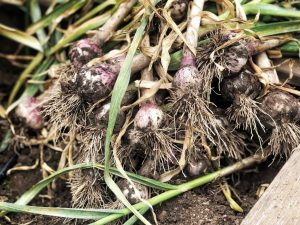
Ji Mao Cai
Jimaocai is a great vegetable to plant in the spring as it grows very quickly in the cooler conditions. If sown in early March the crop will be ready for harvest as early as 6 weeks later before the weather gets too warm and before the pests arrive.
Kale (羽衣甘蓝/Yǔyī gānlán 芥兰/Jiè lán)
Kale is a cool season vegetable that grows best in Shanghai when sown in Autumn. Those wanting a Spring crop as well should consider starting their seeds indoors in January/ February and transplanting outside in March, giving the plants a chance to mature before the temperatures become too warm. Otherwise start in Autumn at the end of September or throughout October, for harvests throughout Winter and into Spring. If you’re planting during the cool season, do so where your crop will get full sun. If you’re growing during warmer temps, plant in partial shade. In general it will take up to 2.5 months for the harvest to be ready, generally when the leaves are about palm sized. A good reason for growing kale is that it is relatively pest free. The biggest problem comes from hungry birds and it is a very good idea to net your crops.
Kohlrabi (苤, Piě, 苤蓝, Piělán)
Kohlrabi is an especially fun vegetable to grow as it's weird alien form often surprises and delights those that are not used to seeing it. Purple Kohlrabi is simply stunning to look at and is my recommendation if you're deciding between the purple and green versions.
Plant in autumn (around October) if you want to have some plants overwintering in the garden, or, my preference in early spring, around February. If starting in Spring it's best to start the seeds inside and transplant out. My preference is to start in Spring. There is less chance of the kohlrabi becoming fibrous because the growing season is shorter. Also there are less pests around to decimate the seedlings at that time of year. Autumn pests love all plants in the brassica family (cabbage) and it is very upsetting to have your beautiful plants decimated seemingly overnight.

Leeks (大葱, Dàcōng)
Leeks are not difficult to grow for anyone with a bit of patience. Their growing season is long! Plant in March for harvests in the autumn and winter, and even into the following spring (if you can bring yourself to wait that long!). Leeks don't mind the cold so they are a good plant to have in the winter garden. However by autumn they are big enough and delicious enough for a good meal, so if you're done waiting by then, enjoy!
Lettuce (生菜, Shēngcài)
Many different types of lettuce can be grown here, although by far the easiest is Butterhead lettuce (奶油生菜, Nǎiyóu shēngcài). This can be sown all year round (except during the heavy rains of June and the heat of July and August, and who can blame them for not wanting to grow then!) and even in winter can be started in a warm spot indoors. Lettuces will bolt in the heat and try to put out flowers, or go to seed.
Mustard (芥末,Jièmò)
Mustard plants are easy to grow, the greens are edible, the flowers attractive, and if the seeds are allowed to mature on the plant, they will provide plenty for mustard making. Sow the seeds in September or October to begin harvesting the greens in late autumn and winter. Mustard will thrive if given constant moisture and it loves cooler weather; a light frost can even improve the flavor.
Space or thin the plants to around 20cm apart, and then you can almost ignore them until you are ready to harvest. Mustard is thankfully free of insect and disease problems but the hotter and drier the weather, the faster the plants will go to seed. Therefore if mustard seed is your primary goal rather than the greens, plant in early spring instead of autumn, and the seeds will be ready in around 60 days.
Mustard greens add a nice, sharp flavor contrast to mild, buttery lettuces and so for salads are best when picked small, young and tender. Larger leaves can be stir-fried or stewed and even the flowers make an edible garnish.
For those wanting the seeds, pick the seed pods just after they change from green to brown, before they are completely ripe. Otherwise the pods will shatter and the seeds will blow everywhere. Your garden could become overrun with mustard plants if this is allowed to happen!
Onions (洋葱, Yángcōng)
Sow seeds at the end of February or during March, for harvests in late summer and autumn. I've noticed that onions don't much enjoy the moisture received during Shanghai's Plum Rain season in June. In 2020, following 7 weeks of heavy rain, the onion crop was struggling, with around 50% of the crop losing their stems to rot. However the bulbs were totally fine and so these onions were harvested earlier (and smaller) than normal while the reminder were left to continue growing until needed. In normal conditions the tops will begin to yellow and fall over when the bulbs are ready for harvest.
Okra (秋葵, Qiū kuí)
This plant was fun to grow as an experiment, although it's not an experiment that I'm planning on repeating any time soon. Okra plants produce some of the most beautiful blossoms I think there are in the vegetable garden, and so may be worth growing for their ornamental value alone. However for the the size of the plant compared to the number of individual okra harvested from each plant, the yield was very low. Also, the one year I tried this the plant was massively attacked by aphids and required a lot of vigilance and maintenance to keep the plants happy. Very, very pretty flowers though and the bees loved them.
Peas (豌豆, Wāndòu)
Peas should be grown in a sunny location. While they can grow in part shade, they won’t be as sweet or productive as those grown in full sun. The other condition necessary for growing peas in well-draining soil. If the soil is too wet before the seeds germinate they will be susceptible to seed rot. Peas can be planted either in early spring (February/March), or in the autumn (October/November) and over-wintered. Because pea shoots are delicious, not just for us but also for many garden pests including slugs and mice, you may choose to start your seeds indoors and plant out when the plants have grown taller and the risk of pests is less.
Potatoes (土豆, Tǔdòu)
Potatoes are quite easy to grow although some years have definitely given greater yields than others. However they are perfect if you have a sunny location but not a lot of space. The easiest way to do it is in either a very large planter pot or a bucket with holes in the bottom. Potato grow bags can also be found on Taobao. In March, start with a couple of inches (5 cm) of soil in the bottom of your bucket/bag/pot. Plant 2 or 3 starter potatoes with the eyes facing upwards into the very bottom and cover with another couple of inches of soil. Don't use any more than 3 starter potatoes or the potato plants will be too crowded, and you will be lucky to have anything to harvest at the end of the growing season. Grow your container spuds in full sun and keep the soil evenly moist but not soggy.
As the potatoes send up their shoots, cover them with compost leaving just the tips uncovered so that the the plant can still photosynthesize and grow. Keep covering with compost until the shoots reach the top. Once the soil is at the top of the bag, the plants will then flower and die back some time around June. You can then dump out the contents and easily pick out your potatoes. All is not lost if you missed planting in March. Potatoes can still be planted in April for a July harvest, although be aware that the quality of your harvest will depend a lot on the strength and severity of the Plum Rain season and diseases such as blight, which are more likely to occur in the damp and humid weather.
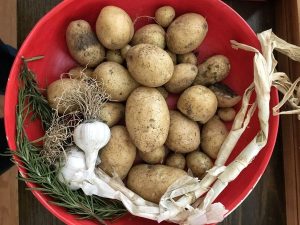
Pumpkins (南瓜, Nánguā)
Like tomatoes and peppers, pumpkins thrive in warm weather, so it's best to plant them in a sunny spot outside after the weather has settled and warmed, usually in April and May. Pumpkins are actually a type of winter squash. They send out vines that are several meters in length, which can be challenging if you are short on space. So the first rule for pumpkins is check you have the room for them to ramble! Some winter squash and pumpkins (the bigger ones, generally) will only produce a couple of fruit per plant. So while they are fun to grow, not every variety gives high yields. Butternut squash is one of the higher yielding varieties, if you can find the seeds. Harvest the pumpkins in the Autumn before the ground chills. If you would like to store them over winter, 'cure' them first in a warm, dry place for several weeks to allow their skin to toughen. Otherwise eat and enjoy!
Qing Cai (Bok Choy, 青菜, Qīngcài)
Bok choy is a cool-season vegetable that grows best when planted in late summer/autumn in Shanghai. It will tolerate light frosts and will continue to grow after the cooler weather has eliminated all the usual pests. Bok choy can handle full sun, but grows best if planted in partial shade, with between 3-5 hours of direct sunlight each day. Make sure it receives consistent watering, as it may also bolt if in a prolonged period of drought. Harvest roughly 45 - 60 days after planting for best results, by slicing about 1 inch above ground level. The stumps will regrow as smaller (but equally delicious) plants.
If a spring planting is required, it is possible if started early enough, but the plants are prone to bolting as the weather warms so late March early April would be the absolute latest direct sowing dates. It would be better to start the seedlings indoors in February and transplant outside in early March to increase the length of the growing season and achieve better results.
Bok choy is very attractive to many insect pests and no matter when you choose to grow it you will get a better harvest if you can use netting to keep the bugs away!
Radish (萝卜, Luóbo)
Rape (See You Cai)
Rocket (芝麻菜, Zhīma cài)
Arugula is a fast-growing, cool season salad green. It is can be planted in early spring, and also in the late summer for an autumn harvest. Scatter the seeds over prepared soil, then press them down firmly. The seeds are small and should barely be covered with soil. As the seeds germinate and begin to grow, thin the seedlings to 4 to 6 inches apart. You can use the thinned seedlings on salads or other culinary applications. Unfortunately arugula is loved by many garden pests, especially slugs and caterpillars, especially in the autumn season. If you have netting, use it to cover the plants until they grow bigger and the cooler weather slows down the insect invasion.
Shallot (see Spring Onion)
Silver Beet (see Swiss Chard)
Spring Onion (小葱, Xiǎocōng, Shallot)
Best planted between March and May, and again September and October. Spring onion seeds take a while to germinate, and wont do it at all if the weather is too hot. During winter you can grow them indoors. Spring onions like regular watering and a nice sunny position and they are ready for harvest around 8-10 weeks after sowing.
Spinach (菠菜, Bōcài)
While spinach can technically be planted in the spring but be aware that the later you start the shorter the growing season will be. By May the plants will be wanting to bolt in the heat, so plant no later than mid March. But actually spinach seeds can be started indoors in January and Febuary and transplanted out (taking care to acclimatize the plants with a cover initially to reduce transplant shock due to the cold) as once it is established spinach will tolerate Shanghai's very cold winters with no problems. My own personal preference though is to plant some between September through to November. This gives a nice harvest towards the end of the year or even into the beginning of the following one. And because spinach is better suited to the cold that to the warmth of spring, the flavour of the harvests at this time is just better.
Sweet Potatoes (红薯, Hóngshǔ, 地瓜, Dìguā)
Sweet Potatoes love Shanghai's hot summers and grow very well here. Plant sweet potato slips from mid May and harvest around Mid October when the leaves and ends of the vines have started turning yellow. Sweet Potatoes will tolerate drier conditions and in fact will produce bigger tubers if allowed to dry out between watering. Too much water will encourage leaf growth instead of growth under the ground where we want it.
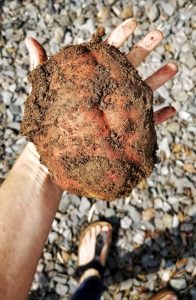
Swiss Chard (瑞士甜菜, Ruìshì tiáncài, 牛皮菜, Niúpí cài)
Sow seeds in March/April or in September/October. Swiss Chard is a very hardy vegetable, and is generally left alone by pests. It survives Shanghai winters extremely well and with enough water it can make it through our summer's too. In certain places Swiss Chard is kept as a perennial vegetable, by twisting off only the outer most leaves from the plant with each harvest, and leave the central smaller leaves to continue growing. However, because the summer's here in Shanghai are quite stressful for the plant (due to excessive heat and at times excessive rainfall), I prefer to start again after summer with new crops for overwintering, and in the spring when the winter crops start to go to seed. Chard comes in red and yellow varieties as well as the regular green, and these colourful plants bring some much-needed colour to our otherwise grey and cold Shanghai winter gardens.
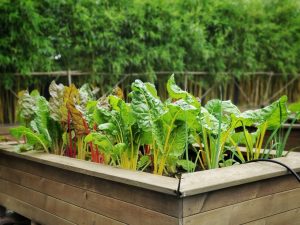
Tomatoes (番茄, Fānqié)
You Cai (Rapeseed, Canola, 油菜, Yóucài)
Like all brassica plants, You Cai or Rape plants are cool weather crops. Planting in September or October will see the plants flowering in a mass of beautiful yellow by mid to late March. This will add a touch of much needed colour to an otherwise dreary month, and the plants will attract many hungry bees to your garden. You Cai plants are very forgiving and will grow in a wide range of soil qualities as long as it is well-draining. They grow best in full sun. Young plants are particularly vulnerable to insect pests and covering the young seedlings with insects mesh will help protect them until the weather cools and the pests die off. Youcai is an excellent cover crop for those looking to avoid bare space and suppress weeds in the garden over winter. In the Spring they can be added directly to the soil as a green manure, and will help to improve soil health by providing organic matter and nutrients.
Zucchini (西葫芦, Xīhúlu)
Also known as “courgettes,” zucchini need organically-rich, fertile soil in a sunny and warm location to grow well. They are extremely easy to grow from seed, and there’s no need to start seed indoors. You can directly sow seed in your garden once the nighttime temperatures are reliably above 15°C. Space plants 2 to 4 feet apart to provide air circulation and discourage disease and keep the soil evenly watered.
Zucchini plants produce best when kept well-pruned. Pruning makes them less susceptible to disease by increasing air flow and circulation, will make them more accessible to bees for pollination and they’ll take up less space. The developing zucchini gain all their energy from only the leaves growing above them. The leaves below therefore, are just taking energy away from the rest of the plant. Prune away all of the leaves that are below the lowest flower / zucchini.
Zucchini plants will sprawl across a large area as they grow, but because they only have one long stem, it is possible to grow them vertically by staking them, much as you would stake a tomato. Insert a sturdy stake or trellis when you first plant so as not to disturb the roots, leaves, or fruit by staking through them later on. As the plant grows, tie it to the support. Growing vertically also has benefits for air circulation and pollination, as well as making the fruit easier to find and thus harvest before they get too big.
Zucchini should be picked young and tender for the very best flavor. Once fruits are 4 inches long, it’s time to start the harvest. Zucchini can grow 1 to 2 inches a day so check your plants every day at harvest time. Zucchini that grows very large will be pulpy, seedy, and bitter flavored.
Zucchini is a fast grower. But because zucchini plants work so hard to produce fruits, it's only natural that the plants' production will slow over the growing season. It’s possible to do succession planting though to mid-August if required. Plantings later in the season typically grow even faster than a spring planting. They should start producing zucchini in a little over a month.
